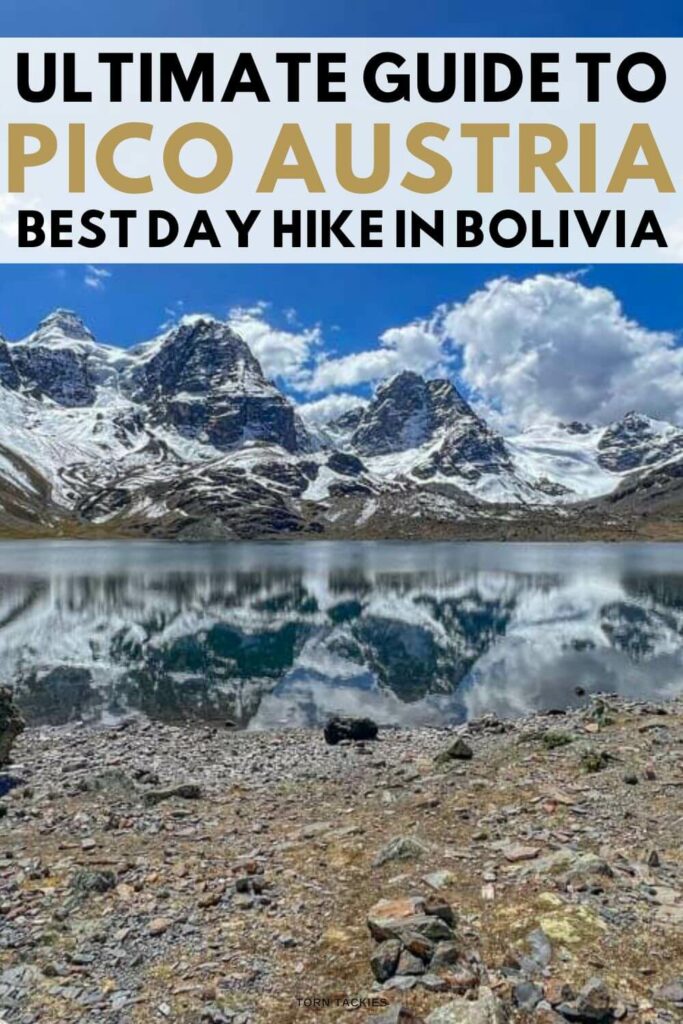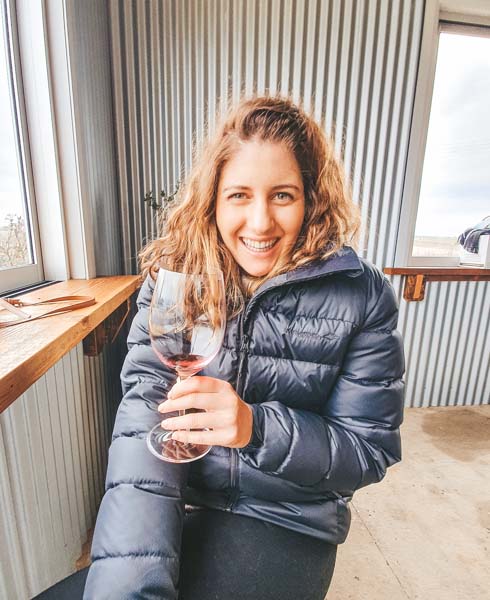Pico Austria, also known as Austria Peak, is one of the most underrated day hikes from La Paz, Bolivia.
Sitting at 5,320m, it’s a challenging altitude trek that offers impressive views of the Cordillera Real Mountain Range.
I stumbled across Pico Austria while searching for an acclimatization hike for the Huayna Potosi climb. The hike and summit exceeded all my expectations. There were no crowds, and the scenery was absolutely spectacular.
I’ve created this detailed guide that includes everything you need to know about Austria Peak, including its difficulty, what tour company to use, and more!
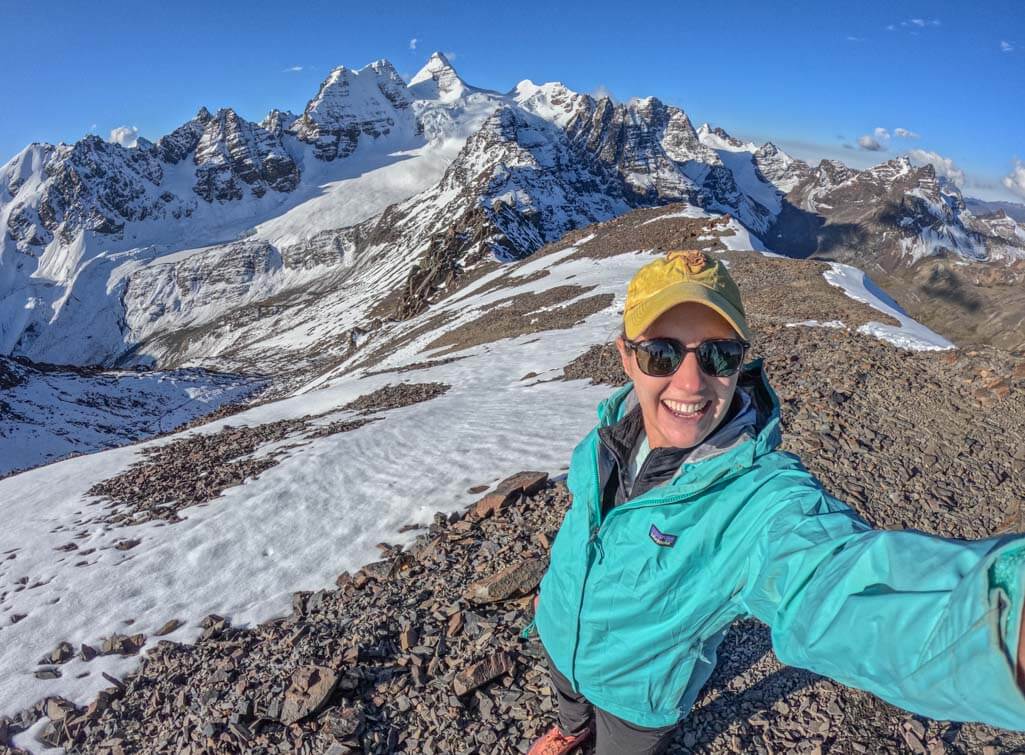
Quick Navigation
Pico Austria Hike Summary
- Height: 5,320 m
- Elevation gain: 810 m
- Time needed: 12 hours (6 hours hiking)
- Entrance fee: 20 Bs (Bolivianos)
- Pico Austria tour cost: 300 Bs
Where is Austria Peak, Bolivia
The trailhead to Austria Peak lies 45 km from La Paz. It’s located in the Cordillera region, famed for its high peaks and impressive lakes.
You can do the Pico Austria trek as a day trip from La Paz, but it’s a long day! You’ll leave at 8 am and only return after 8 pm.
This is the option I chose. Yes, it’s a long day, but a lot of your time is spent sitting in a bus driving to and from the trailhead.
Alternatively, you can opt for an overnight hike where you stay at the refugio located alongside Laguna Chiar Khota. This allows you to explore more of the area before climbing Pico Austria.
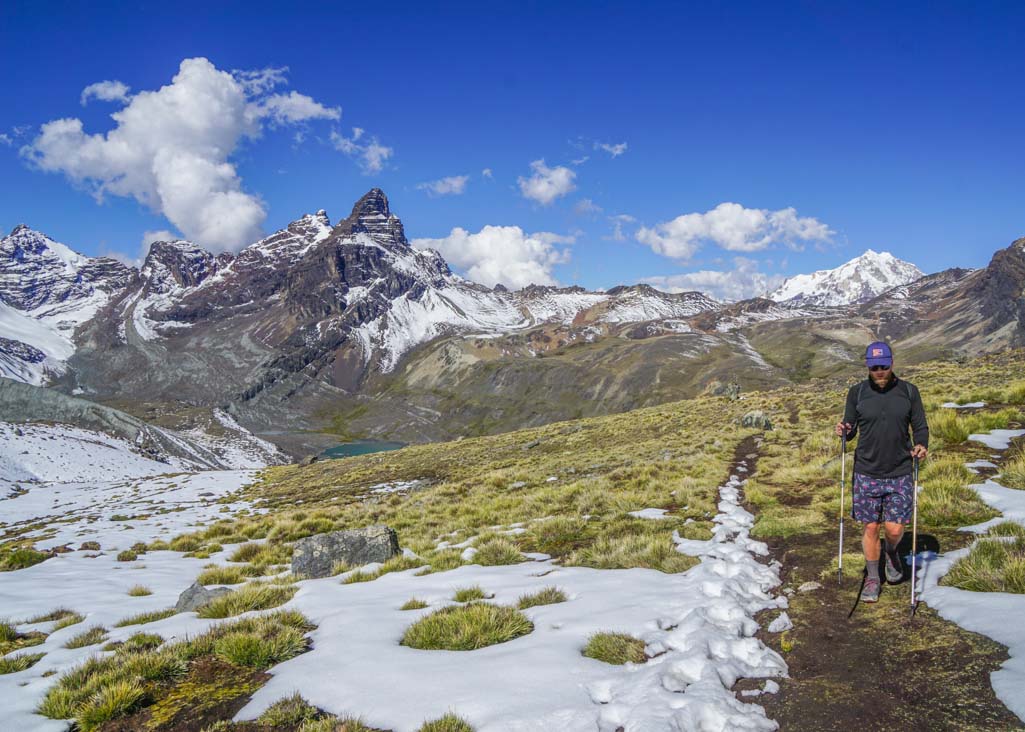
Pico Austria difficulty
Pico Austria is one of the tougher day hikes I’ve done. It doesn’t involve any technical climbing, but its difficulty lies in the uphill stretch leading to the peak.
Keep in mind that it’s a 5,320m peak, which is practically the same height as Everest Base Camp.
The altitude will affect you!
If you’ve never hiked above 5,000 m, you’re in for a surprise. There’s less oxygen in the air, so you’ll walk a lot slower, stopping frequently to catch your breath. You may also experience headaches.
When these headaches become intense, coupled with feelings of nausea – that’s when you should turn around. These are symptoms of Acute Mountain Sickness, and if you continue with the trek, it could be fatal.
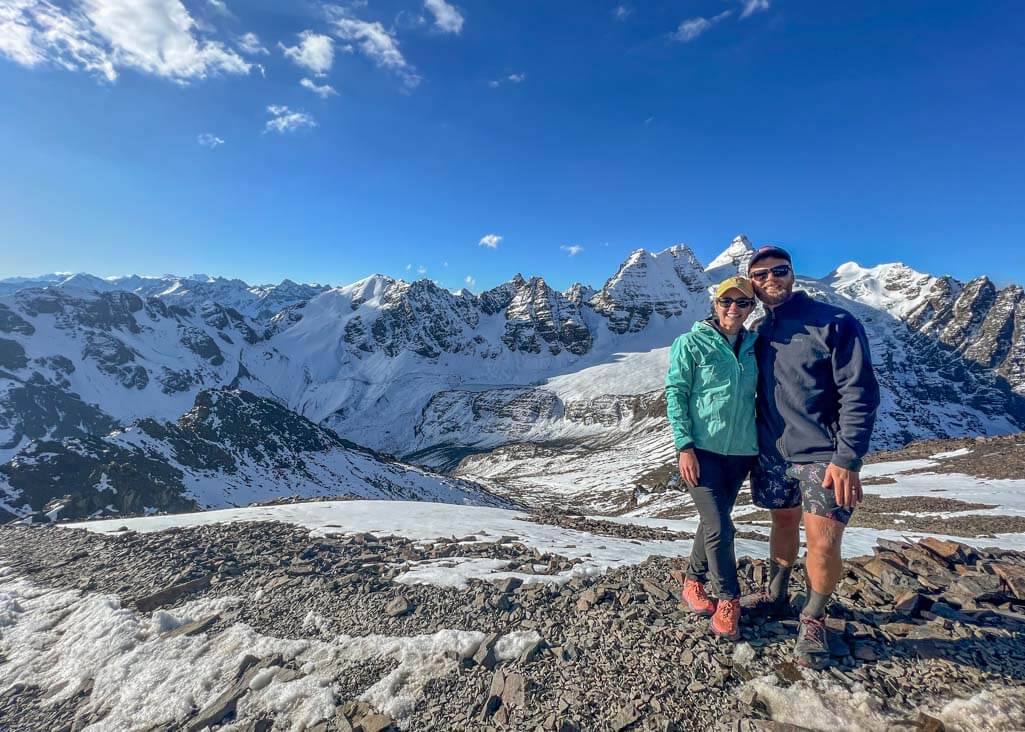
Acclimatizing for Pico Austria
La Paz sits at 3,500 m, whereas Austria Peak is 5,320 m.
If you’re arriving in La Paz from a lower altitude, you should only hike Pico Austria after spending two nights in the city. This is for your body to acclimatize to the altitude.
I hiked Austria Peak on my third day in La Paz and didn’t experience any adverse effects of the altitude (besides shortness of breath).
Everyone in my group also seemed fine…. until we got on the bus back to La Paz.
This is when it all went pear-shaped! A few people got throbbing headaches and felt nauseous. Luckily we were on our way back to La Paz, which is at a lower altitude.
It shows that even if you’re feeling strong on the way up, the altitude can take its toll on you a few hours later.
So be sure to walk slowly and drink plenty of water during the trek.
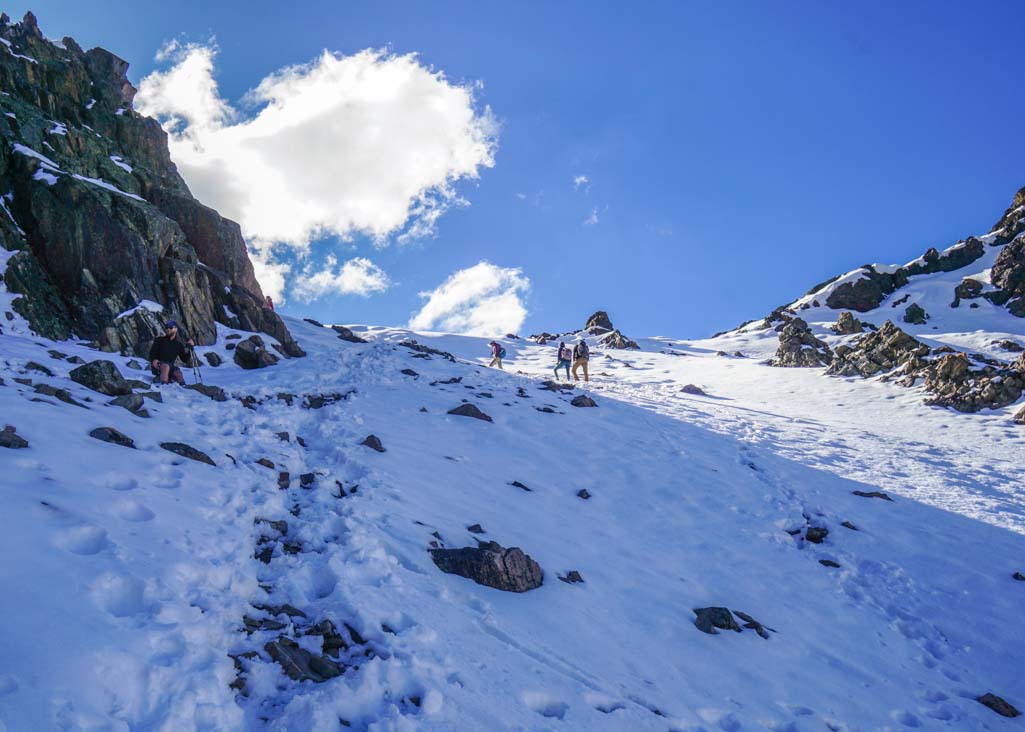
Hiking Pico Austria without a guide
Yes, you can climb Pico Austria without a guide. The trail is easy to navigate, and if you’ve hiked at altitude before, you’ll be fine.
But logistically, it will be difficult as there is no direct public transport to and from the trailhead.
From La Paz, you’ll need to take a bus followed by a taxi to get to Rinconada, which is where the hike begins.
The last 30 minutes of the drive involves a pretty isolated dirt road, and you won’t find any public transport here. Because of this, the taxi would have to wait for you at the trailhead or come back later to fetch you, which could be an expensive exercise.
This is one place you don’t want to be stuck after the hike as there is no phone reception or accommodation.
After weighing up the pros and cons of trekking Pico Austria without a guide, I decided to book a guided tour instead.
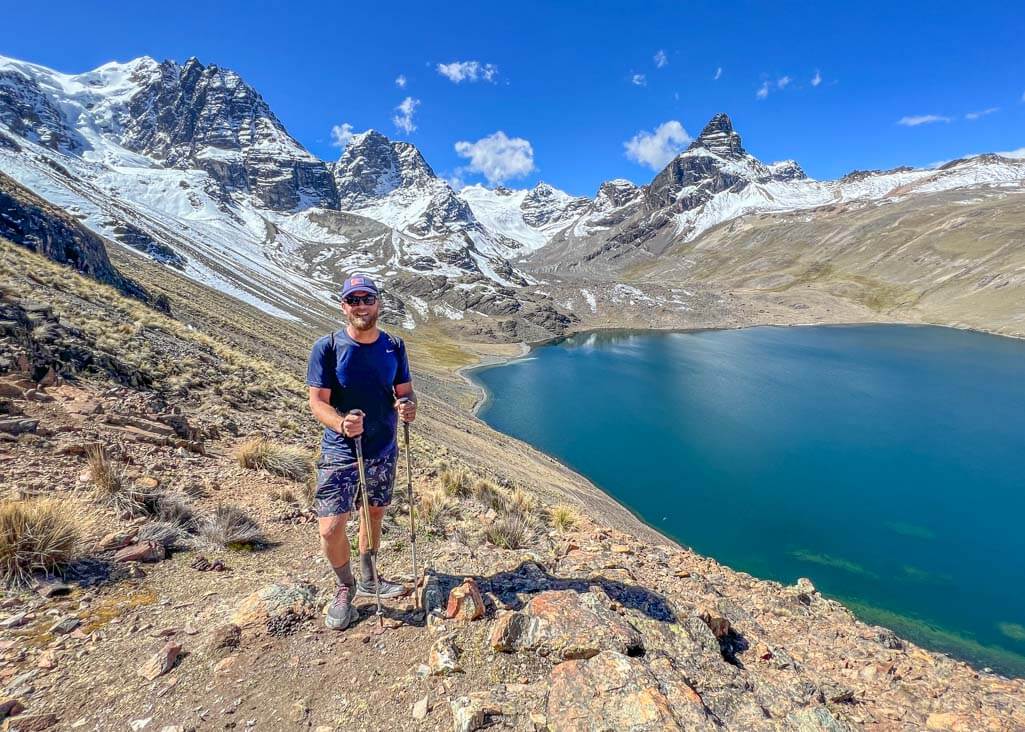
Pico Austria route
Two iconic attractions make this hike so incredible: Laguna Chiar Khota and Pico Austria.
Here’s what you can expect along the way.
La Paz (3,500 m) to the trailhead (4,510 m)
If you’re doing the Pico Austria full-day hike, you’ll meet your group at 9 am. Two hours later, you’ll arrive at the trailhead.
Despite this only being a 45 km drive from La Paz, it takes a long time to get there. This is partly due to notorious traffic getting out of La Paz and the dirt road leading to the trailhead.
We stopped in a small village along the way, buying snacks before continuing our journey.
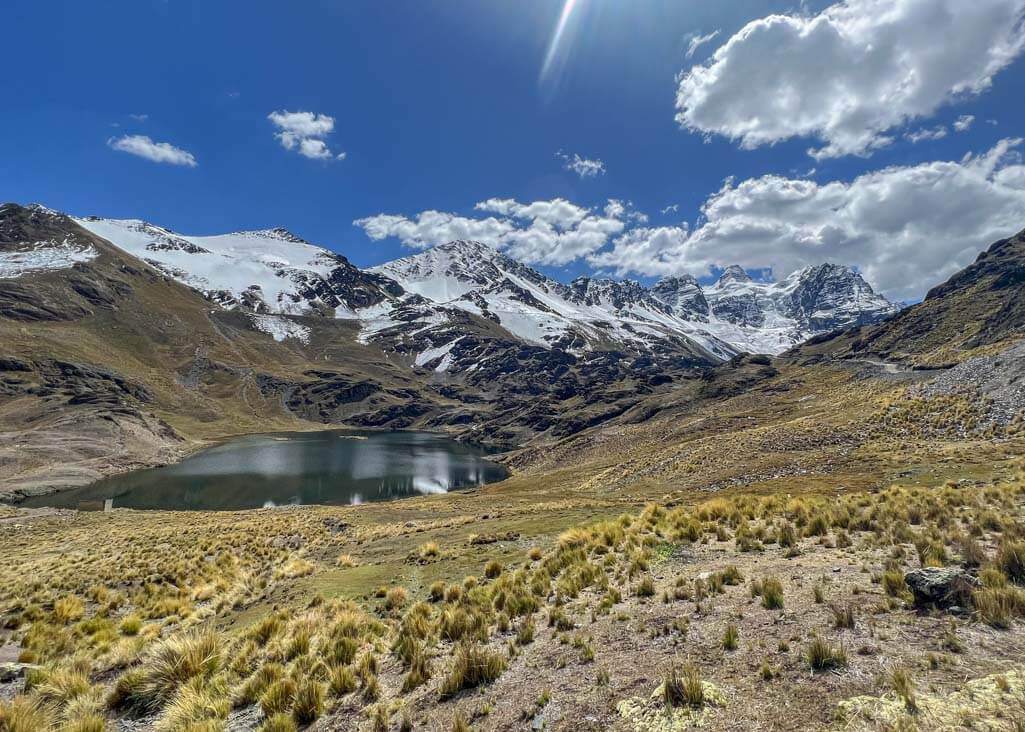
Trailhead (4,510 m) to Laguna Chiar Khota (4,670 m)
After paying the 20 Bs entrance fee, you’ll walk along a trail that meanders through the Cordillera Real.
It’s an easy track with a gradual incline leading to the beautiful Chiar Khota Laguna. It should take just under an hour to reach the laguna.
Surrounded by 5,000 m peaks, Laguna Chiar Khota is a great lunch spot and a worthy attraction on its own.
There’s a small refugio where you can stay if you’re doing a multi-day trek in the area.
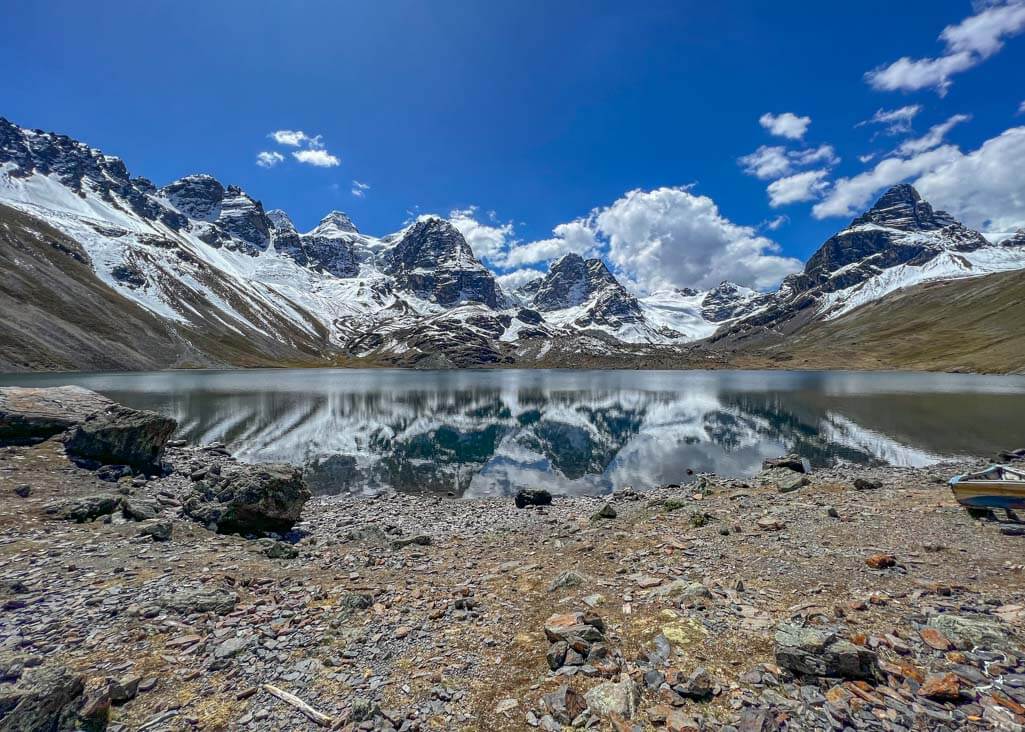
Laguna Chiar Khota (4,670 m) to Pico Austria summit (5,320 m)
From Laguna Chiar Khota, you’ll continue left with the trail to Pico, Austria. This section of the hike takes 3 hours.
It’s all uphill from here, and you’ll soon start to feel the effects of the altitude. Parts of the trail are covered in snow, but crampons aren’t necessary.
The final stretch is very rocky but doesn’t require any climbing.
After a slow slog, you’ll finally reach the summit. Not only are you surrounded by snow-capped peaks, but you can also see Lake Titicaca in the distance.
Our group reached the summit at 4:30 pm, and after spending 30 minutes enjoying the views, we headed back down.
It took us 2 hours to reach the trailhead, and we walked the last 30 minutes in the dark (so bring a head torch).
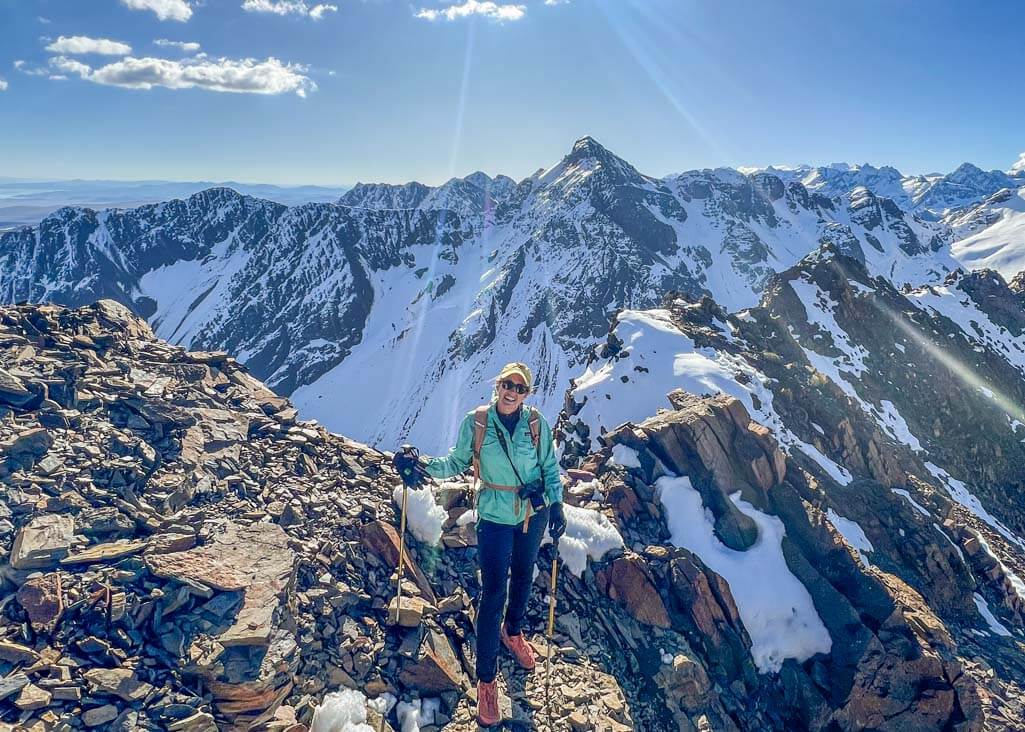
Pico Austria Tour
I paid 300 Bs for my Pico Austria Tour, which included transport, lunch, and a guide. There were eight of us in the group, and only one person didn’t make it to the summit.
This was a budget tour, and you can pay up to 450 Bs for a more personalized experience and an English-speaking guide.
I booked my Pico Austria tour with South Treks. Considering the cheaper price tag, it was good value.
Overall, I was happy with their service, but there are a few things to note if you consider booking a budget tour.
We had two guides leading our group, but they did very little with regard to the “guiding.” They kept at the front of the pack and ensured we followed the trail. But that was about it.
I have completed numerous altitude treks, so I felt comfortable hiking without a guide keeping a close eye on me.
In fact, I preferred it. I knew how to handle the altitude and was aware of how my body was being affected.
But for most people in my group, this was their first hike above 5,000 m. Our guides did little in terms of monitoring how they were feeling, and they weren’t proactive in offering assistance or advice for combating the altitude.
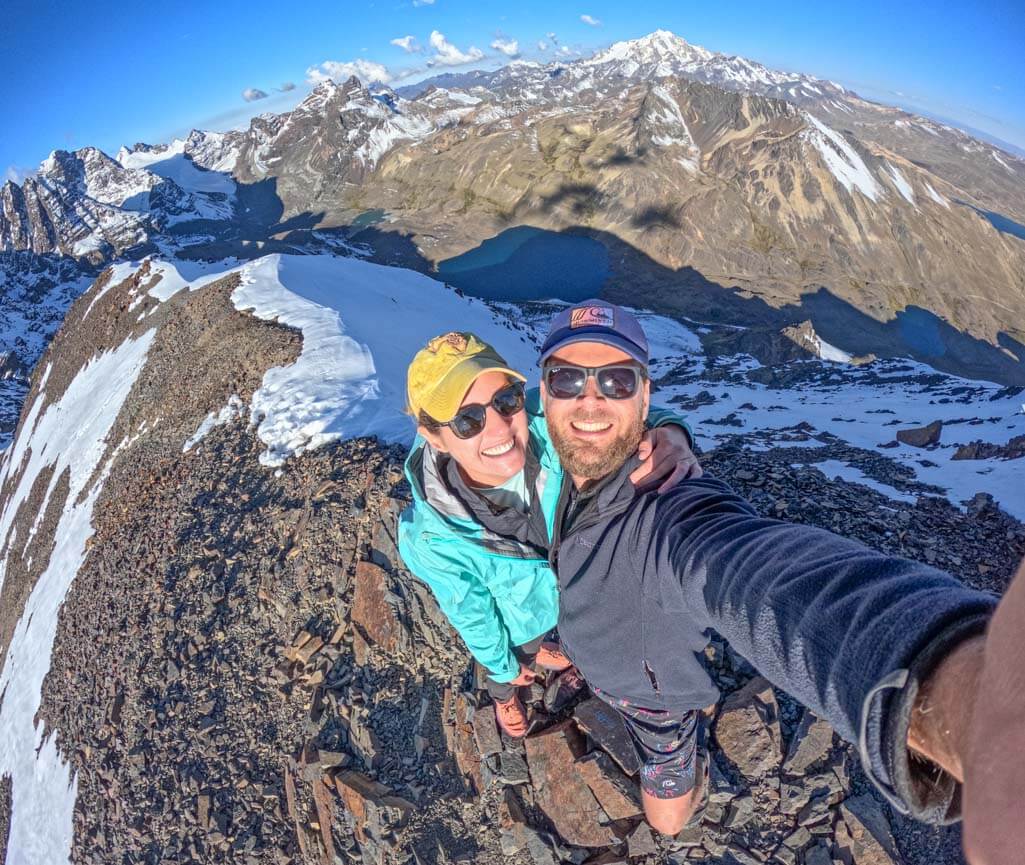
Tips for hiking Pico Austria
- There is snow along the trail. We didn’t use crampons, and they were not necessary as the snow was very hard from being walked on.
- Bring trekking poles. These will help you on the downhill snowy sections.
- If you feel strong after the Pico Austria trek, I recommend giving Hauyna Potosi a go. The 6,000m peak is a bucket list climb for most adventurers.
What to pack for Pico Austria
- 2 liters of water
- Sunglasses
- Hat
- Long sleeve top
- Rain jacket
- Head torch
- Trekking poles
- Snacks
Final thoughts on hiking Austria Peak in Bolivia
Hiking Austria Peak was one of my Bolivia highlights. The trail is diverse and crosses varying landscapes, making it an exciting hike.
Like it? Pin it!
Do you have any questions about hiking Pico Austria in Bolivia? Drop me a question in the comments section below.

